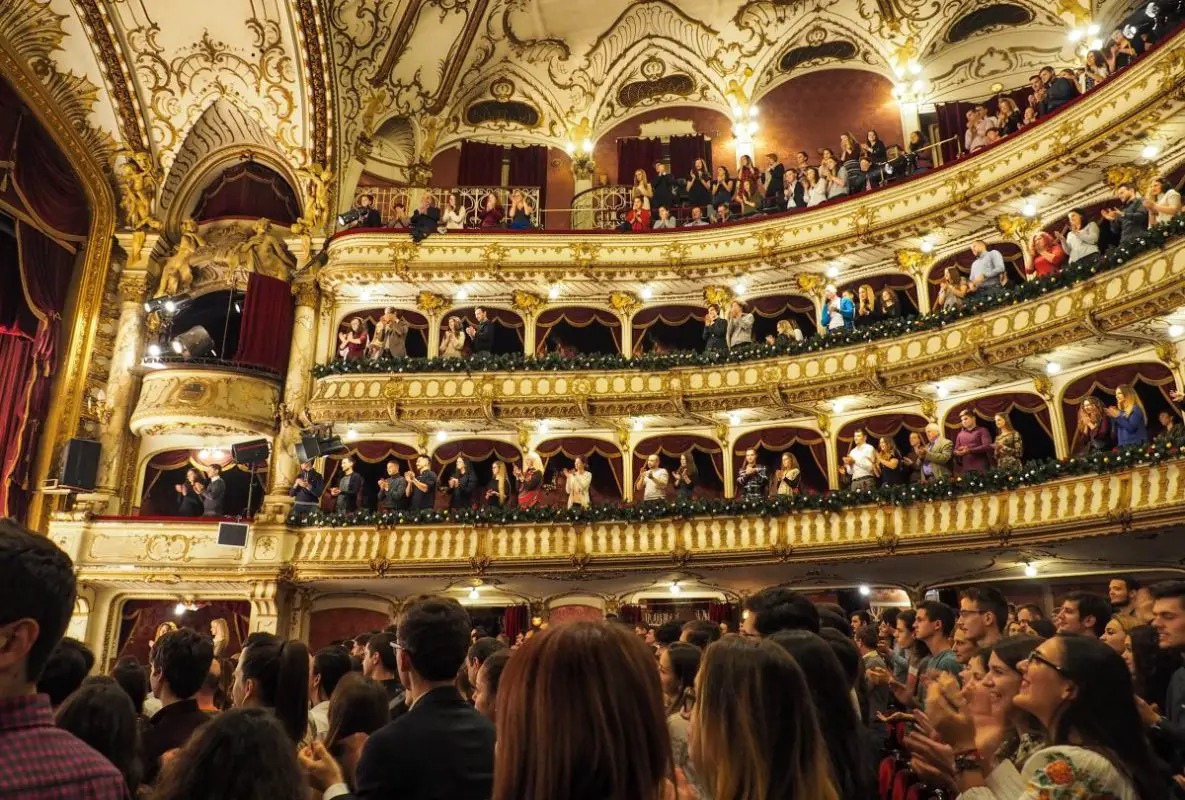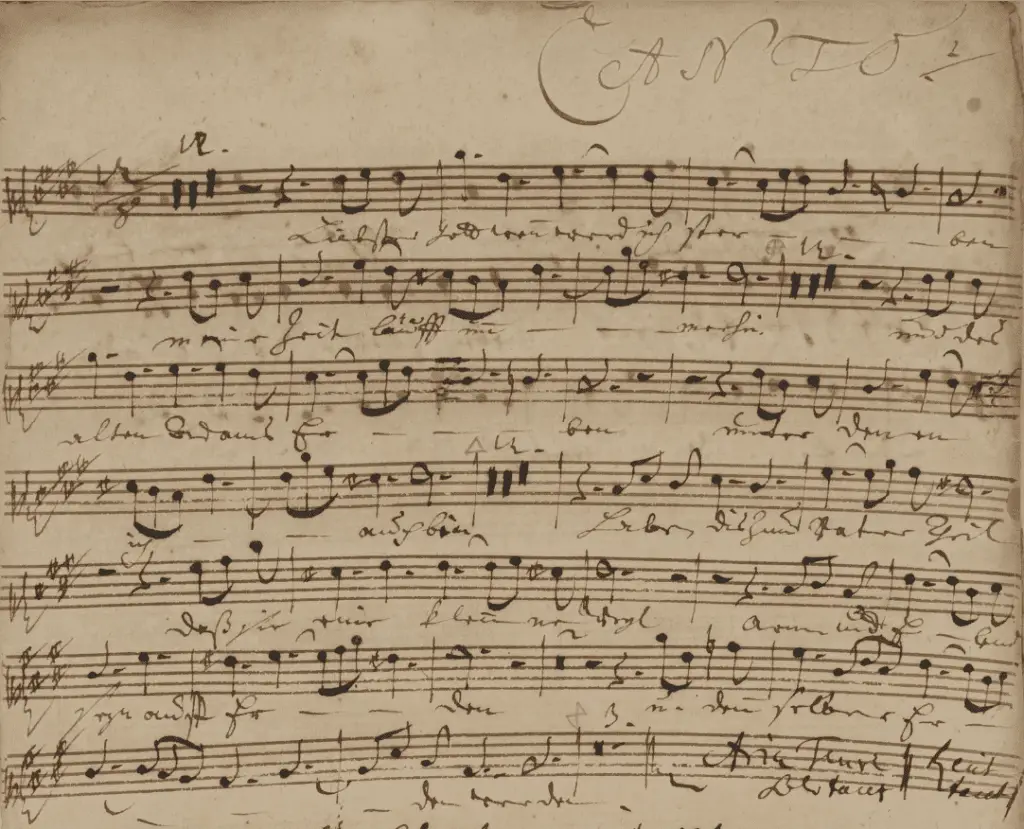Can you imagine a musical composition that weaves together vocalists and instrumental accompaniment, creating a captivating symphony of sound? Brace yourself because we’re about to embark on a musical journey that will unravel the essence of cantatas. So, what exactly is a cantata?
What is a cantata? A cantata is a remarkable musical composition that combines the expressive power of vocalists with the harmonious support of instrumental accompaniment, resulting in a truly captivating musical experience. It’s a masterpiece that brings together the artistry of voice and instrument, transporting listeners to a world of emotions and musical delight.
What is the difference between cantatas, sonatas, and operas?
Why are cantatas, sonatas, and operas distinct from one another? Let’s unravel the fascinating differences and get our musical vocabularies in tune!

Cantatas: vocal expression at its finest
Cantatas are a veritable feast for the ears, blending vocal prowess with instrumental accompaniment. They take listeners on an emotional journey through evocative recitatives and soul-stirring arias, creating an intimate musical experience. These vocal works are typically shorter than grand operas but packed with poetic brilliance and heartfelt melodies.
Sonatas: instrumental euphony
Now, let’s turn our attention to sonatas—the instrumental counterpart of the musical world. Unlike cantatas, sonatas focus on instrumental compositions, allowing virtuosic musicians to showcase their technical prowess. While they lack vocal elements, sonatas still enchant audiences with expressive melodies, intricate harmonies, and breathtaking instrumental solos.
Each form has its unique allure and artistic expression, making the world of music a treasure trove of diverse experiences.
Operas: the theatrical extravaganza
Ah, operas—the epitome of theatrical grandeur and dramatic storytelling. These musical masterpieces take center stage with elaborate sets, stunning costumes, and impassioned performances. Operas transport us to worlds of romance, tragedy, and triumph, captivating audiences with powerful voices, intricate orchestration, and captivating narratives. They are a breathtaking fusion of music, drama, and visual artistry.
So, what sets cantatas apart from sonatas and operas? Cantatas are primarily vocal compositions, while sonatas are instrumental works, and operas are grand-scale theatrical productions. Each form has its unique allure and artistic expression, making the world of music a treasure trove of diverse experiences.
AKAI Professional MPK Mini MK3

AKAI Professional MPK Mini MK3
How did the cantata evolve throughout history?
The cantata’s roots trace back to the Renaissance period when it emerged as a form of the secular vocal madrigal. These early cantatas were typically performed a cappella and showcased the expressive capabilities of solo voices. As time passed, the cantata evolved from being solely performed by soloists to encompass duets and choral arrangements, expanding its musical scope.
Baroque period cantatas: from soloists to complex structures
During the Baroque era, the cantata flourished and became more intricate in its composition. Baroque composers such as Johann Sebastian Bach, George Frideric Handel, and Alessandro Scarlatti further developed the form. Let’s explore the key developments during this period:
- Transition to Complex Structures: Cantatas expanded from simple solo compositions to more elaborate structures incorporating recitatives, arias, and choral movements. This evolution allowed composers to explore a wider range of musical expression.
- Secular and Sacred Cantatas: Cantatas were divided into two main categories: cantata da camera (chamber cantata) and cantata da chiesa (church cantata). The secular cantatas were performed in more intimate settings, while the sacred cantatas were composed for liturgical services.
- Recitatives and Da Capo Arias: Baroque cantatas often followed a structure where recitatives (sung speech) were connected by da capo arias (arias with a repeated section). This alternating pattern allowed for expressive storytelling and musical variety.

Vocal choral works: Classical and Romantic periods
In the Classical and Romantic periods, the term “cantata” began to encompass any vocal choral piece, regardless of its formal structure. During this time, the cantata leaned towards a more song-like character compared to the lengthier and sacred oratorios. Composers like Ludwig van Beethoven, Carl Maria von Weber, and Felix Mendelssohn contributed to the development of the cantata during this era.
Modern cantatas and contemporary composers
In the 20th century, the cantata continued to evolve in the hands of contemporary composers. They created cantatas for chamber vocal groups, song cycles, and even incorporated them into opera movements. Prominent examples include Carl Orff’s Carmina Burana and composer Benjamin Britten’s Cantata Misericordium. These compositions showcased the enduring adaptability and innovation of the cantata form.
Who are the famous composers of the cantata?
Cantatas are musical compositions typically written for vocal soloists, choir, and instrumental accompaniment. They emerged during the Baroque period and continue to be appreciated for their expressive qualities and diverse themes. The table below showcases a selection of renowned composers and highlights some distinguishing features of their cantatas, including their compositional styles, preferred languages, and notable works.
| Composer | Compositional Style | Preferred Language | Notable Cantatas |
|---|---|---|---|
| Johann Sebastian Bach | Polyphonic counterpoint, intricate harmonies | German | “Ich habe genug,” “Jauchzet Gott in allen Landen,” “Herz und Mund und Tat und Leben” |
| George Frideric Handel | Ornate melodies, dramatic choral sections | Italian, English | “Messiah,” “Dixit Dominus,” “Alexander’s Feast” |
| Alessandro Scarlatti | Melodic lyricism, expressive vocal writing | Italian | “Il Sedecia,” “La Giuditta,” “Santa Maria Maddalena penitente” |
| Dietrich Buxtehude | Adventurous harmonies, contrasting sections | German | “Membra Jesu Nostri,” “In dulci jubilo,” “Jesu, meine Freude” |
| Antonio Vivaldi | Vivid orchestral writing, virtuosic vocal parts | Italian | “Gloria,” “Nisi Dominus,” “Stabat Mater” |
| Johann Mattheson | Balanced structure, rich contrapuntal textures | German | “Brockes-Passion,” “Der liebreiche und geduldige David,” “Leandro e Lena” |
Advantages and disadvantages of the cantata
Cantatas are musical compositions that have been cherished throughout history for their grandeur and emotional depth. They offer a unique blend of vocal and instrumental music, often accompanied by a choir, and can be a delightful experience for both performers and listeners. However, like any artistic form, cantatas have their advantages and disadvantages. Let’s explore them further.
Advantages of the cantata
Cantatas bring forth several advantages that make them a special form of musical expression:
- Emotional richness: Cantatas offer a vast range of emotions, from joyous celebrations to profound sorrow, allowing composers to convey deep and complex feelings through music.
- Narrative storytelling: Many cantatas follow a narrative structure, telling stories through music and lyrics. This aspect adds an extra layer of meaning and engagement to the musical experience.
- Collaborative nature: Cantatas often involve multiple performers, including soloists, choir members, and instrumentalists. This collaborative aspect fosters teamwork and creates a sense of community among musicians.
- Artistic versatility: Cantatas allow for artistic experimentation, incorporating diverse musical styles, such as baroque, classical, or contemporary, enabling composers to showcase their creativity and adaptability.
- Spiritual and cultural significance: Cantatas have played a vital role in religious and cultural ceremonies throughout history, making them a source of spiritual and historical connection for communities and individuals.
Disadvantages of the cantata
While cantatas offer many advantages, there are also some aspects that may be considered disadvantages:
- Complexity: Cantatas can be intricate and challenging for both performers and listeners. The elaborate compositions and demanding vocal and instrumental parts require a significant level of skill and understanding.
- Length: Cantatas are often longer musical works, sometimes lasting over an hour. This can be a drawback for those seeking shorter, more concise musical experiences.
- Language barrier: Some cantatas are written in languages that may not be understood by all listeners. While translations and program notes can help bridge this gap, the full depth of meaning may not be fully appreciated without a deep understanding of the language.
- Limited accessibility: Due to their complexity and specialized nature, cantatas may not be as widely performed or readily available compared to more popular musical genres, which can limit exposure and accessibility for some individuals.
If you want even more great tips and information, watch this video called “What is a Cantata?” from the Meet Mozart YouTube channel.
Frequently asked questions (FAQ)
Do you still have questions about what a cantata is? Below are some of the most commonly asked questions.
What is the purpose of a cantata?
Cantatas serve various purposes depending on their context. In a religious setting, cantatas are often performed as part of church services and convey religious texts or stories. They can enhance the liturgy, explore biblical narratives, or celebrate specific religious events. In a secular context, cantatas can be performed at concerts or special occasions, conveying non-religious themes such as love, nature, or historical events.
How long does a typical cantata last?
The duration of a cantata can vary depending on the specific composition and the number of movements it contains. On average, a cantata can range from 15 minutes to over an hour in length. Bach’s cantatas, for example, can span anywhere from 20 minutes to over an hour, depending on the complexity and number of movements included.
Are cantatas still performed today?
Yes, cantatas continue to be performed and enjoyed by audiences around the world. While they originated in the Baroque period, the enduring beauty and significance of cantatas have ensured their place in the contemporary music scene. Many renowned orchestras, choirs, and soloists include cantatas in their repertoire, and they are frequently performed in concert halls, churches, and other venues dedicated to classical music. Additionally, there are numerous recordings available that showcase the rich variety of cantatas composed throughout history.
Conclusion
I hope this melodious journey through the world of cantatas has left you inspired and equipped with valuable insights. Remember, whether you’re exploring the rich history of cantatas or embarking on your own musical endeavors in a home studio, the key is to embrace your creativity and passion for sound.
Did I cover everything you wanted to know? Let me know in the comments section below—I read and reply to every comment. If you found this article helpful, share it with a friend, and check out my full blog for more tips and tricks on music-related topics. Thanks for reading, and keep rocking to the rhythm of your own beats!
Key takeaways
This article covered the fascinating world of cantatas. Here are some key takeaways:
- Cantatas are vocal compositions with instrumental accompaniment, often structured with recitatives and arias.
- Cantatas evolved from Renaissance madrigals to more complex forms during the Baroque period, and their meaning expanded during the Classical and Romantic eras.
- Johann Sebastian Bach’s cantatas are renowned for their complexity, integration of chorales, and profound impact on the genre.
- Other well-known cantata composers are George Frideric Handel, Alessandro Scarlatti, and Antonio Vivaldi.















